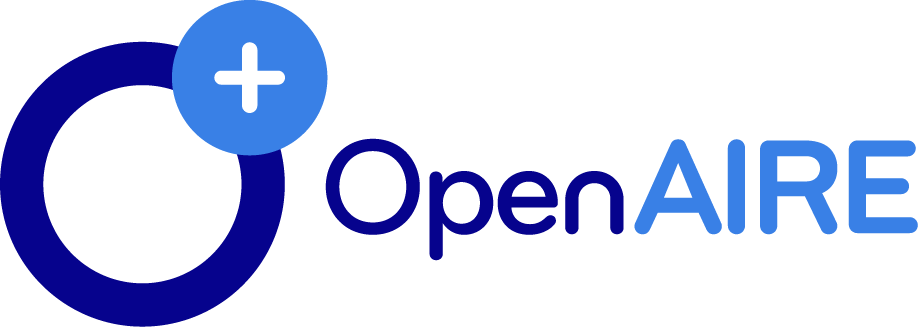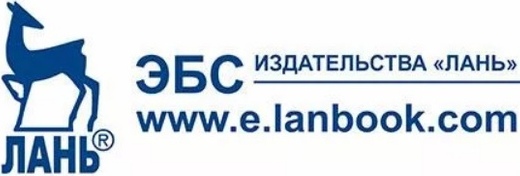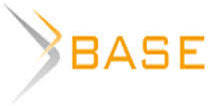ВИДЕНИЕ И ОТКРЫТИЕ: ДИНАМИЧЕСКИЕ ИМПЕРАТИВЫ ВОКРУГ ТВОРЧЕСТВА, ИННОВАЦИЙ И СОЦИАЛЬНЫХ ПРЕОБРАЗОВАНИЙ
Aннотация
Ключевые слова: Творчество, инновации, преобразующее обучение, расширение прав и возможностей, непрерывное обучение, обучение работе на основе
К сожалению, текст статьи доступен только на Английском
Background and context
The question of creativity, its origins and nature, and how this relates to innovation in learning, theoretical and applied, has been at the centre of European discourse for a number of decades. The innovation imperative has been widely described either as a mechanism to secure Europe’s place in the future of global socio-economic relations or as the cornerstone of the creativity which will preserve a uniquely European perspective on human development and transformative capacity. As the centre of gravity in terms of political power and economic generation has shifted towards Asia in recent years, creativity and innovation have increasingly been articulated as a kind of policy mantra to enable some form of European influence to be maintained. This stance clearly contains a number of contradictions and inconsistencies. In fact, if some form of creativity is to be maintained in the educational, training and creative production centres of European learning discourse, it will require a deeper and more cogent evaluation of what creativity really is, how it can be fostered and how technological paradigm shifts can articulate an innovation perspective that radically addresses human needs in the environment of 21st century crisis and re-imagining.
In 2008 the European Union approved funding for a collaborative Transversal Research project, led by the University of the Basque Country, called Creanova. At its core, this project attempted to re-define the critical elements of creativity and innovation, to relate this to transformative applied learning and to test its central premises in the learning environments of its partners (France, Scotland, Finland, Italy, Germany and Ireland).
Research on creative learning and innovation is critical for enhanced European competitiveness in globalized contexts. Innovation includes learning methodologies, practices, systems and applications. This includes a focus on how such innovative practice can be rolled out to improve creative competencies of learners and students in vocational, and adult education and work-based environments. Development of research findings and a network of competent institutions with experience in applying innovative methodologies to promote creative competencies in vocational and adult education is a valuable resource for relevant professionals and training institutions. Furthermore, the application of these results to adult education should also be straightforward, at least to specific target groups of training subjects.
If nothing else, the significant transformations opened up by new technologies place a dramatic new emphasis on innovation. They affect all learning and relationships accordingly.
Theoretical formulations of creativity
Often, when starting to analyze society, one of the first concepts is that of globalization of economic and financial systems. However, a more historical and socio-cultural approach (such as those found in education and training) suggests contemporary society is experiencing spectacular changes in the social organization of knowledge production, use and distribution.
Formal education systems transmitted and propagated accepted scientific doctrine - knowledge produced by means of curricula that selected the ideas and skills that learners or required for subsequent application to their trades or professions. Education placed emphasis on teaching and instruction. The professor or teacher played a major part in this framework, given that these were the people who taught those that did not know. This was a banking conception of education in which the student was an empty container that had to be filled with content, opposed to a candle to be lit [8]. On the whole, traditional learning systems in the Western World were modeled around the idea of differential access to learning and knowledge, thus reflecting existing differences in stratified class systems. Classrooms were structured in strictly didactic ways in terms of pedagogy. In addition, classrooms were located in fixed places - the architecture itself reflecting notions of hierarchy, order and control [3].
Parallel to school divisions and stratification were similar systems in the world of work to which schooling structures were linked more and more explicitly during the age of industrialization [2]. Hierarchies of knowledge transfer are seen in the division of work. This hierarchy can be conceptualized as a type of pyramid. At the peak of the pyramid is the owner-stakeholder (or entrepreneur, engineer or designer) who originates an idea or technique that can then be implemented by taking advantage of economies of scale [12]. The concept of the independent ‘genius’ who creates new ideas or techniques and the technocrat who ensures they are implemented by ‘front-line’ workers maintains, legitimates and reproduces an inherently unequal distribution of the capability to produce, know, learn and derive shared benefit from the ideas/techniques. The education and training of workers, given their subsidiary function, only develops to the most basic level required to satisfy production needs. Veblen powerfully conceptualized the impact of fragmented knowledge and skill acquisition for craft workmanship resulting from industrialization as long ago as 1914 [15].
Such a process raises new issues around structures of learning, working and production and how they might promote innovation and creativity. It is necessary to consider and compare different types of organizational structures that contribute to creativity learning and innovation. It should be possible to identify different forms of organizational structures from evaluations of practice and to investigate how different methods for developing innovation and creativity work in different systems or organizations.
In a broad sense creativity has been defined as the production of novel and useful ideas - doing something for the first time anywhere or creating new knowledge. Innovation is viewed as the adoption or implementation of novel and useful ideas, encompassing adaptation of products or processes from outside an organization.
Expansive learning involves processes by which work organizations resolve internal contradictions in order to construct qualitatively new ways of working. It involves creation of new knowledge and new practices for an emergent activity, learning embedded in, and constitutive of, qualitative transformation of the entire activity system [5]. Spinosa, Flores and Dreyfus [14] referred to this process as ‘reconfiguration’.
Avis [1, p. 308-326] draws out connections between expansive learning, social capital and collective intelligence. These concepts are situated within their specific socio-economic contexts, asserting that the development of social capital will be a vehicle for economic regeneration and competitiveness as well as a mechanism for the generation of social inclusion and cohesion. However, Avis sees the progressive potential of expansive learning, social capital and expansive learning as limited within a context that accepts current capitalist relations.
Framing innovation and creativity
Today innovation concepts apply to a context where use of the Internet and ICTs have reshaped the market economy (globalization) and have led to unprecedented change in observed rhythms of growth and their intensity. Knowledge has become the cornerstone on which to rest the development and survival of companies. Creativity and innovation have turned into new tools to lead processes effectively towards new aims.
Jan Fagerbert [6] summarized the dominant discourse about the future of global economies.
- Innovation introduces novelty (variety) into the economic sphere - if innovation stops, the economy does not increase
- Innovation tends to cluster in certain industries/sectors, which consequently grow more rapidly leading to structural changes in production and demand and, eventually, organizational and institutional change
- Innovation is a powerful explanatory factor behind differences in performance between firms, regions and countries. Those that succeed in innovation prosper at the expense of less able competitors.
Literature on the subject indicates four main trends reflecting the effect of globalization on innovation processes:
- Acceleration. The process from knowledge production to commercialization is much shorter. The rapid development and wide dissemination of ICT has played a key role in bringing about this change.
- Inter-firm collaboration and industrial networks. Most firms do not have the capability or the resources to undertake such initiatives - this is the main reason for the expansion of collaborative schemes for research and the growing importance of industrial networks.
- Functional integration and networking inside firms. Speedy adaptation and innovation gives the functionally integrated firm an advantage. Flexibility, interdisciplinary linkage and cross-fertilization of ideas at managerial and laboratory levels within the firm are now critical.
- Collaboration with knowledge production centres. Increasing reliance on advances in scientific knowledge for major new technological opportunities has been an important stimulus for firms to collaborate with scientific centres like public and private laboratories, universities and other applied research centres.
These trends, more visible in some countries than in others, reveal a new and more collaborative interconnected and relational conception in organizational culture. They evoke a socio-economic model where the key to success is using much greater degrees of diversity, interdependency and complexity to manage risk and achieve goals. This way of doing things is diametrically opposed to techniques of hierarchy, simplification, uniformity and control used during the industrial era.
In terms of dialogic, expansive and third-order notions of learning, working as a community and/or in collaboration is a crucial part of obtaining a more complete and more complex understanding of learning. Thus, collaborative learning and the creation of new learning environments based on trust emerge as real driving forces in both education and work contexts [10; 9]. The goal would seem to lie in the consolidation of large communities, networks involving universities and education, companies and governments who promote generation and fostering of innovating processes and policy.
The evolution in the understanding of learning in today’s world and its evolving role in work and education points to an important cultural change around cooperation, collaboration and collective creation in widely different cultural aspects. In this new culture, community and its relational meaning take on transcendental value. Along with the idea of community is the goal of union between sets of different communities shaping communicative networking processes.
The increased importance of innovation reflects the fact that it represents a major response to intensifying competition by enhancing the learning abilities of organizations and individuals alike. Organizations can no longer establish sustainable growth without innovation and learning. The scope of the challenges posed by the globalizing learning economy requires that all innovation policies rest on inclusion of a learning component.
Figuerdo [7] importantly distinguishes between the concepts of incremental innovation and disruptive innovation. Incremental innovation builds on existing thinking, products, processes organizations or social systems. They can be routine improvements or they can be dramatic breakthroughs but they address the very core of what already exits. Disruptive innovation is addressed to people who do not have any solutions.
Innovation is a process that can stimulate research in other sectors of economic, social and cultural life with objectives going beyond simply making a profit. The knowledge gained from exploration, experimentation and exchange of the practices stimulating learning can be utilized to overcome the narrow limits of pragmatic and instrumental views of creativity (16) or to encourage innovation that connects new conceptions of human development and competitiveness with the search for new forms of social life [4].
Creative learning and the world of work
These themes are related to profound changes in society in general and to the structured world of work in particular. There is a general acceptance that traditional schooling, the ‘front-end loading’ approach for preparation for the world of work, is no longer appropriate. This is so for a number of reasons, which include:
- Rapid changes in the world of work
- The changing nature of goals for education and training
- The realization that most people will have a number of occupations and job changes during the period of their working life.
Emphasis has evolved from a concentration on instrumental concepts of vocational education as a preparation for work during the years of formal schooling, towards a concept of lifelong learning that is work related. There is a growing realization that the demands of the workplace make it imperative that social and interpersonal knowledge, skills and competencies be incorporated into any programme of learning both for and in the world of work.
The learning organization must therefore produce individuals who are:
- Adaptable
- Flexible
- Innovative
- Pro-active
- Responsible
- Highly motivated.
In such a context the ability to cut costs, maintain increased production rates and maintain competitiveness may tend to dominate all commercial thinking and forward planning. When the imperative is to survive from day to day, most organizations can find issues around learning, planning, staff qualifications and innovation either esoteric or irrelevant. Rather, the organization’s role should be to marshal productive activity to meaningful behavioral and social ends. In this sense, employment can become participation in activities that are profitable to all key stakeholders. Work itself, in this sense, goes beyond the mere provision of activity to the creation of value - in both economic and social senses.
Development requires removal of sources of deprivation: poverty, tyranny, lack of economic opportunities, neglect of public services, intolerance or violation of human rights [13].
More restrictive conceptualizations see creativity and innovation as an agenda based on econometric concerns. At the centre of this discussion is the question on how to develop methods that investigate construction of learning and knowledge to transform power relations, as in the concept of development at a human scale [11].
General Conclusions
In a globalized environment work is no longer a uniform progression of production and consumption but is also an unfolding of a profound restructuring of all social, cultural, personal and ethnic relationships and understandings. The fact remains however, that modern society is displaying worrying levels of uneven development and disturbing levels of documented inequality, poverty and discrimination. Environmental degradation, homelessness, two-tier social service provision, absence of planning, asset stripping of public services and blind reliance on ever-increasing consumption patterns are but some of the indices of current social malaise in all countries.
Learning, in the context of organizational output, is most effectively understood when positively linked with:
- Creativity
- Problem resolution
- Change management
- Diversity and inclusion
- Improved communications.
Organizations who have seen learning as more than skill-specific training have been able to benefit from the extraordinary potential of new and diverse elements in their workforces. This has meant that the voyage of discovery around learning has become centrally linked to the strategic learning needs of the organization as a whole. This learning of the organization is tied directly to the learning needs of each and every member. Employers and organizations that see only cost implications in the provision of work-based learning are, at a minimum, missing out on the extraordinary potential of thinking and acting in different ways.
Innovation is literally doing what has not been done before. It calls for considerable creativity for employers to develop innovative practices. It is often a veritable leap into the unknown. Yet all the evidence is that the companies who achieve success do so because they are doing something new - or something old in a new way. Innovation is not about market gimmicks. It is about products and skills that emerge from new ways of organization and human creativity. Innovation is based upon learning from the past as much as about anticipating the needs of the future.
Innovation involves asking a rigorous set of questions that interrogate what the current situation is and then sets results against what could (or more intriguingly, should) be. Innovation exists in real environments with strongly established structures and modes of ownership that may, by their nature, be antipathetic to any form of questioning or new thought.
The creation of a participative and democratic learning environment has not been to the forefront in traditional discourse surrounding innovation. In fact, the discussion on innovation and creativity has been increasingly conditioned by images derived from free market liberalism and from the sense of competitive pressures. The general global economic crisis since 2008 may ironically provide a welcome opportunity to re-locate innovation in the context of community and shared ownership - where values have equal importance with rates of profitable extraction.
Innovation is a concept originally related to practical application and development of new ideas in the industrial world with a key focus on boosting competitiveness. However, the development of new technologies affecting production, use and distribution of knowledge - combined with grave global structural problems - raises a parallel debate on the ultimate aims of innovation and its source – human creativity. The twin aims of understanding the processes and practice in learning that promote creativity is intrinsically linked to producing social value and contributing to both organizational and individual needs. This is a discussion that is only unfolding.

















Список литературы
Список использованной литературы появится позже.